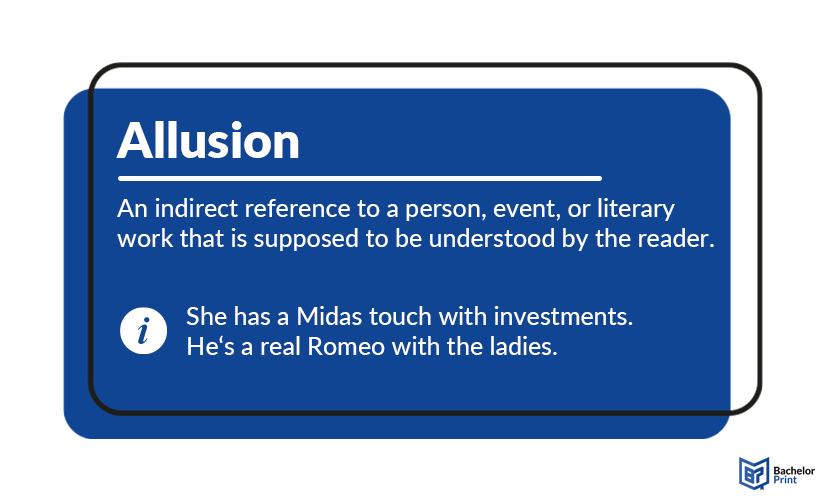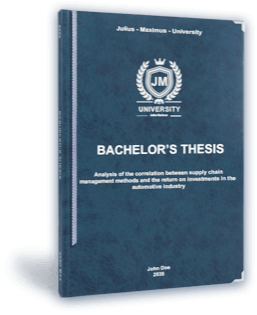
Exploring the concept of allusions reveals how writers can use indirect references to enrich their work. In academic writing, it is a valuable stylistic device that connects ideas to familiar texts, historical events, or cultural references. It’s like going down a rabbit hole, where each reference can add depth and context. This device helps make writing more engaging and layered, drawing readers into a more meaningful discussion.
Definition: Allusion
Allusion (pronounced uh-LOO-zhun) is a literary device that involves an indirect reference to a person, place, event, literature, art, or culture. It relies solely on the reader’s familiarity with the reference to add meaning or context without a detailed explanation. By drawing on a shared body of knowledge, human experience, or cultural touchstones, this stylistic device can create connections or convey complex ideas succinctly. It is often used to evoke emotions, suggest parallels, or provide commentary in a subtle way, enhancing the richness and layers of a text.
The etymology of this figurative device originates from the Latin word “alludere,” meaning “to play with” or “to refer to,” which suggests a playful reference or indirect mention. Due to its figurative nature, this device is frequently used in poetry. The origins of the examples below, will be thoroughly explained later in this article.

Types
There are multiple types of frequent allusions. Each one will be explained below, along with examples.
A casual reference is an indirect, often brief mention of a well-known person, place, event, or text, typically used to add a layer of meaning but without deeply impacting the new context. It doesn’t require extensive knowledge from the reader as it is common knowledge and can be used in everyday speech as well.
A self-reference occurs when a writer alludes to their own earlier books or previous work. This type of allusion requires familiarity with the author’s body of work.
A corrective allusion intentionally contrasts or critiques the original source, typically to show disagreement with or improvement upon it.
A single reference intends for the reader or listener to recognize and recall the full context of the reference and apply it to the new situation. It’s a direct link to a specific source or event.
An allusion that appears to point to a specific source or meaning but is intentionally ambiguous or open to one’s own interpretation.
Multiple references, also known as conflation, refer to multiple sources at once, which create a blended or layered meaning.
Examples
In this section, we have provided numerous examples and their meanings in the contexts of culture, literature, religion, pop culture, and other categories.
Culture
References
This allusion represents the ideal that anyone, regardless of background, can achieve success and prosperity through hard work. It implies the promise of upward financial security in America.
It refers to Julius Caesar and his betrayal by his close friend Brutus who assassinated him. It suggests a scenario where trust is broken, often in a shocking or treacherous way, typically involving betrayal by someone close.
Poetry
This category includes references to well-known lines, themes, and symbols from poetry that evoke deeper emotional or philosophical meanings. Such classical allusions typically draw on historic poems or renowned poets, adding layers of resonance or introspection to language.
References
It refers to a burden or guilt that someone has to carry, drawn from Samuel Taylor Coleridge’s poem The Rime of the Ancient Mariner, where the mariner carries the weight of killing an albatross.
An allusion to fighting against death or despair, from Dylan Thomas’ famous villanelle poem urging his father to stand firm against death.
Literature
Literary allusions reference well-known works of literature, including classic novels, songs, or plays.
References
This allusion references Sherlock Holmes, the famous detective created by Arthur Conan Doyle, known for his uncanny observational and deductive skills.
It refers to Petyr Baelish, also known as “Littlefinger,” from the “A Song of Ice and Fire” book series by George R.R. Martin. He is infamous for his manipulative nature in pursuit of his own ambitions.
Pop culture
Pop culture allusions reference modern-day media, celebrities, trends, or iconic elements from movies, music, and television familiar to a contemporary audience.
References
This reference alludes to the Marvel superhero known for his rage and strength, meaning that someone is uncontrollable when upset.
It references director M. Night Shyamalan, known for films with unexpected and dramatic twists, suggesting that her actions or personality are full of surprises and unpredictability.
Religion
Religious references invoke symbols, figures, or stories from religious texts and traditions, such as the Bible, the Quran, or other sacred writings.
Mythology
Mythological allusions reference figures, stories, or symbols from ancient myths, often drawing from Greek, Roman, or Norse mythology.
References
This allusion references the myth of King Midas, whose touch turned everything to gold, meaning that everything she handled or pursued was highly successful.
It suggests someone’s beauty could launch a thousand ships, referencing the most beautiful woman in Greek folklore whose abduction started the Trojan War.
Purpose
Writers use indirect references for many purposes. They are explained and listed below.
- Create deeper meaning: Allusions add layers of meaning by linking the text to familiar stories, symbols, or concepts.
- Evoke emotion or imagery: They trigger emotional responses or vivid imagery by referencing well-known cultural touchpoints.
- Add insight or context: They provide background or context quickly, allowing readers to draw connections without extensive explanation.
- Enhance character or theme: They reveal character traits or reinforce themes through associations with historical or mythical figures.
- Engage and connect with the audience: By using familiar references, allusions engage readers and make the material more relatable.
numerous advantages for Canadian students:
- ✓ 3D live preview of your configuration
- ✓ Free express delivery for every order
- ✓ High-quality bindings with individual embossing

Allusion vs. illusion
Two almost identically sounding terms can differ drastically in meaning. This is the case with allusion and illusion. The difference between them will be explained below.
Allusion
A subtle reference to a well-known person, event, story, or concept, used to enrich storytelling and create a web of references. For example, “He’s a real Romeo” alludes to Shakespeare’s character, indirectly implying someone is a romantic.
Illusion
Although they sound similar, their meanings are very different as an illusion is a deceptive appearance or false perception of reality. For example, a magician’s trick creates an illusion, making it appear as though something impossible has happened.
FAQs
An allusion refers to an indirect, subtle reference. This reference can cover various themes, such as culture, history, mythology, literature, and movies.
Five examples are:
- Their relationship is as doomed as the Titanic. (Headed for inevitable failure)
- Cookies are his kryptonite. (Irresistible temptation or weakness)
- Our elderly neighbor is a real-life Scrooge. (Stingy and cynical)
- He’s the Michael Jordan of our team. (Exceptionally talented)
- This place feels like the Capitol. (Lavish and out of touch with reality)
It is an indirect reference to a well-known person, place, event, or work of literature that adds more profound meaning to the text without explaining the reference in detail.
Authors use this literary device to add depth, evoke emotion, establish context, and connect their work to broader themes or cultural elements without lengthy explanations.
